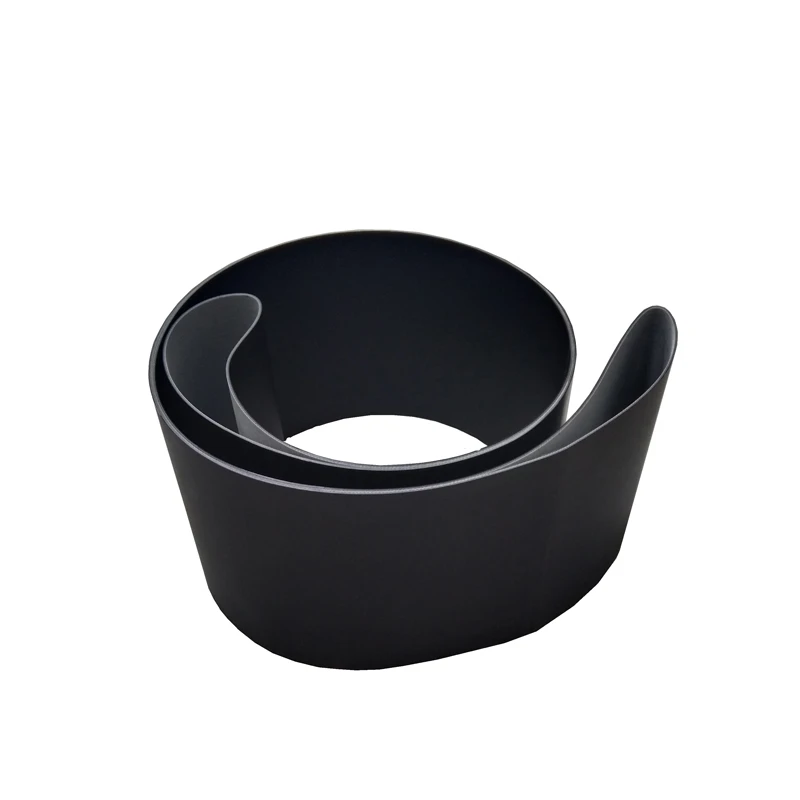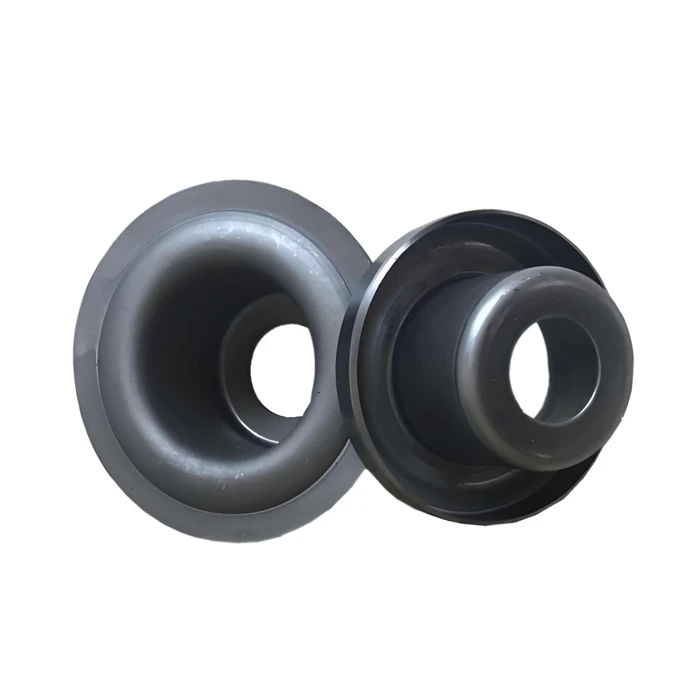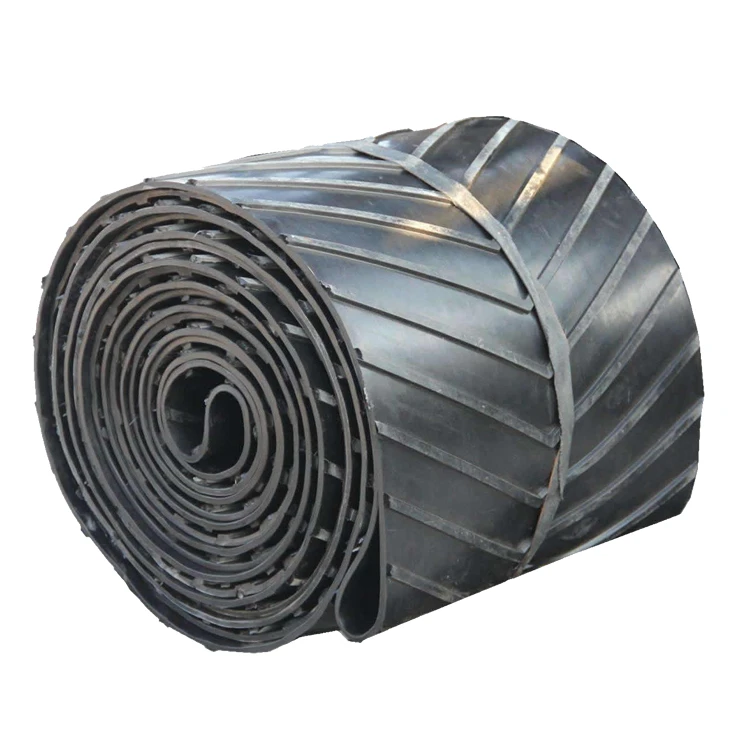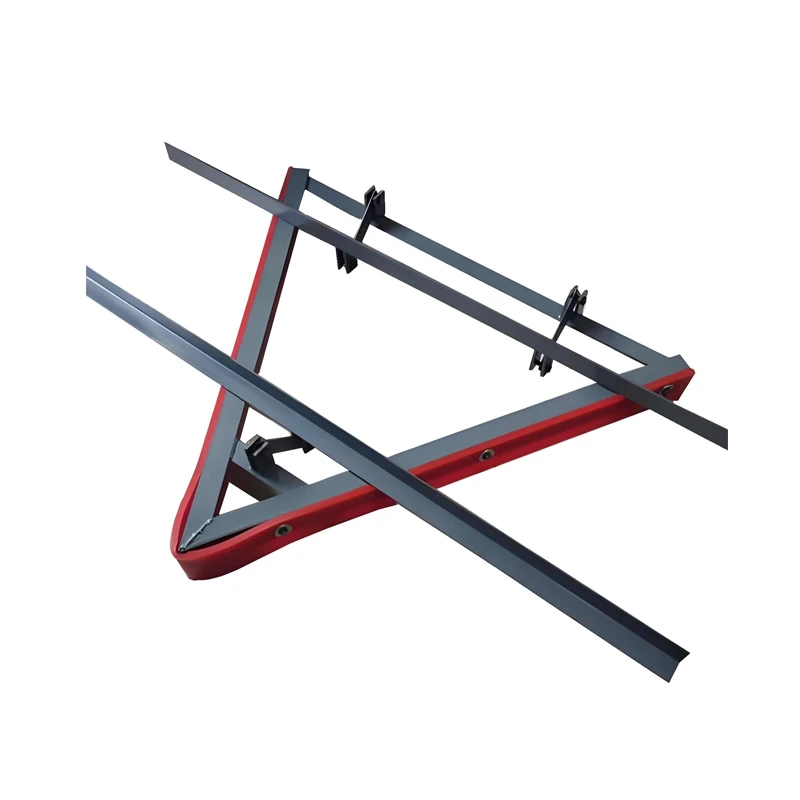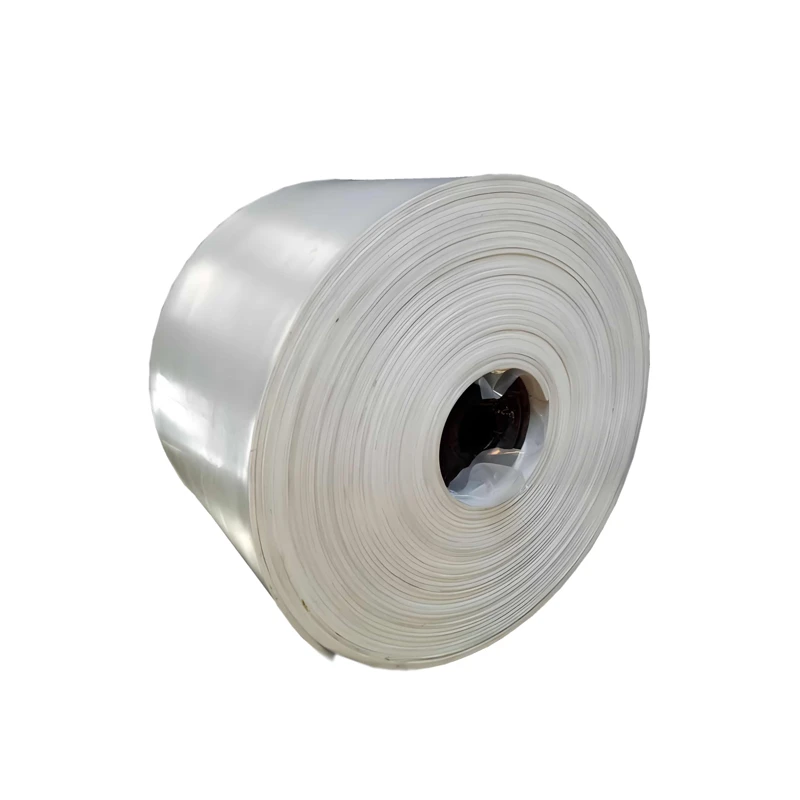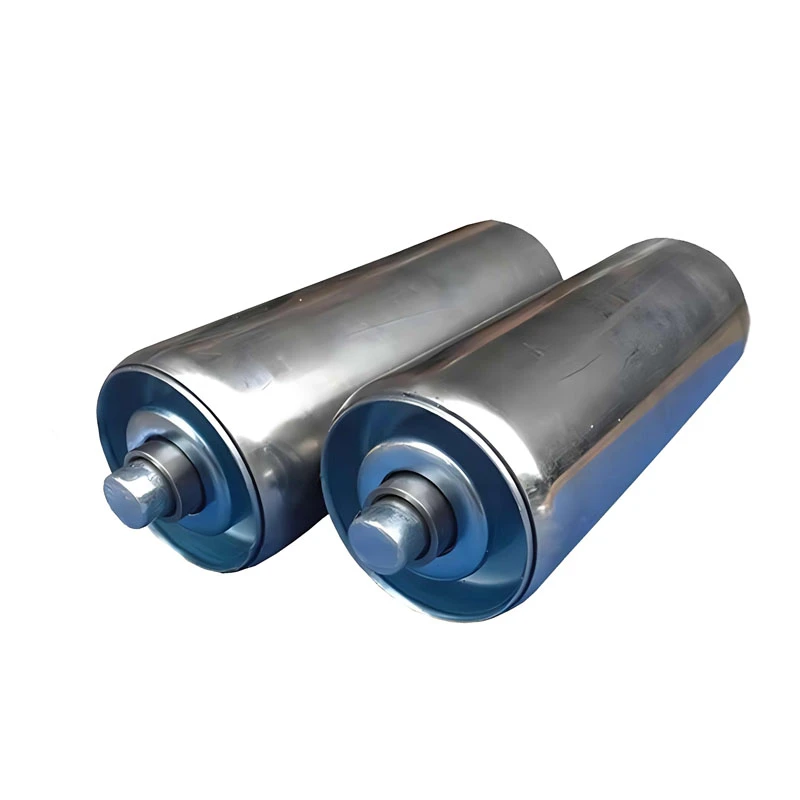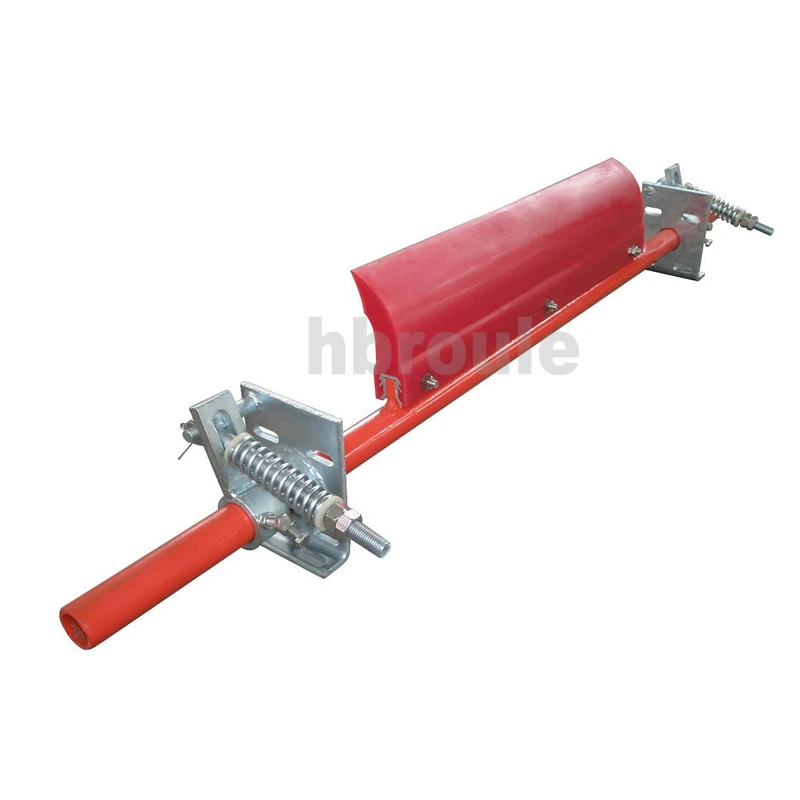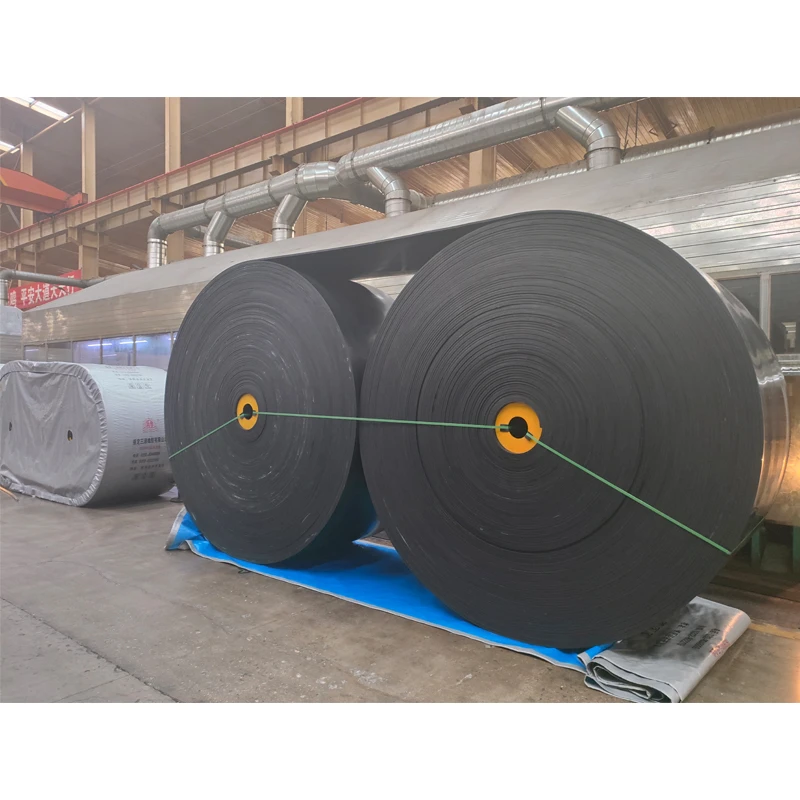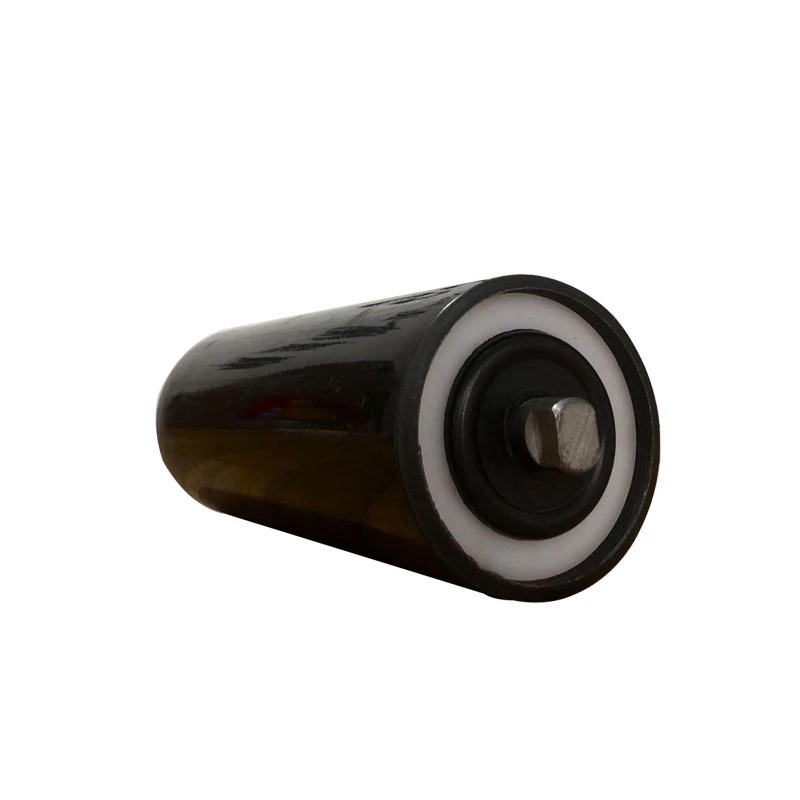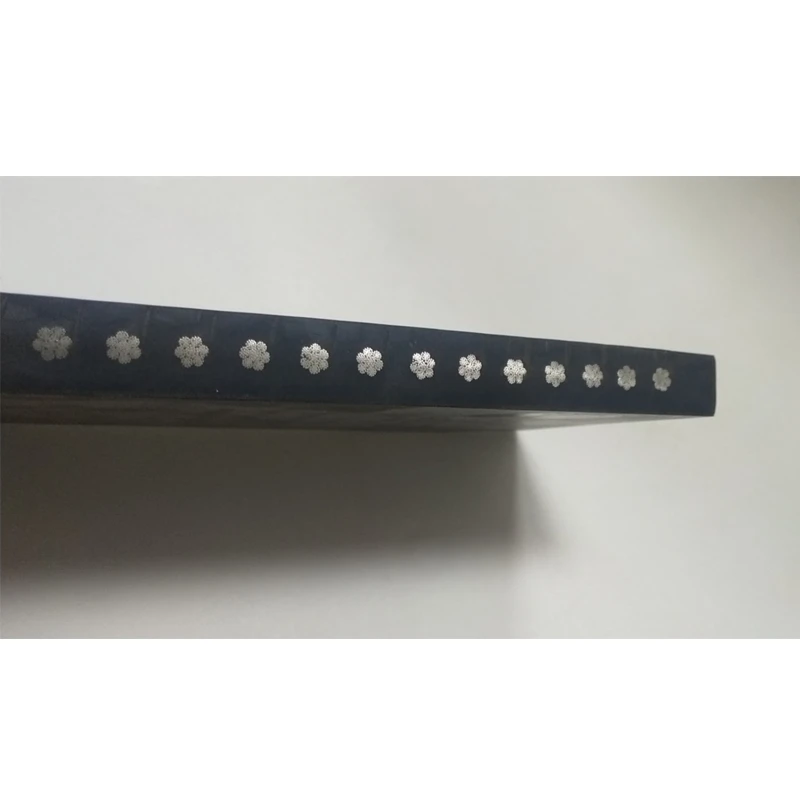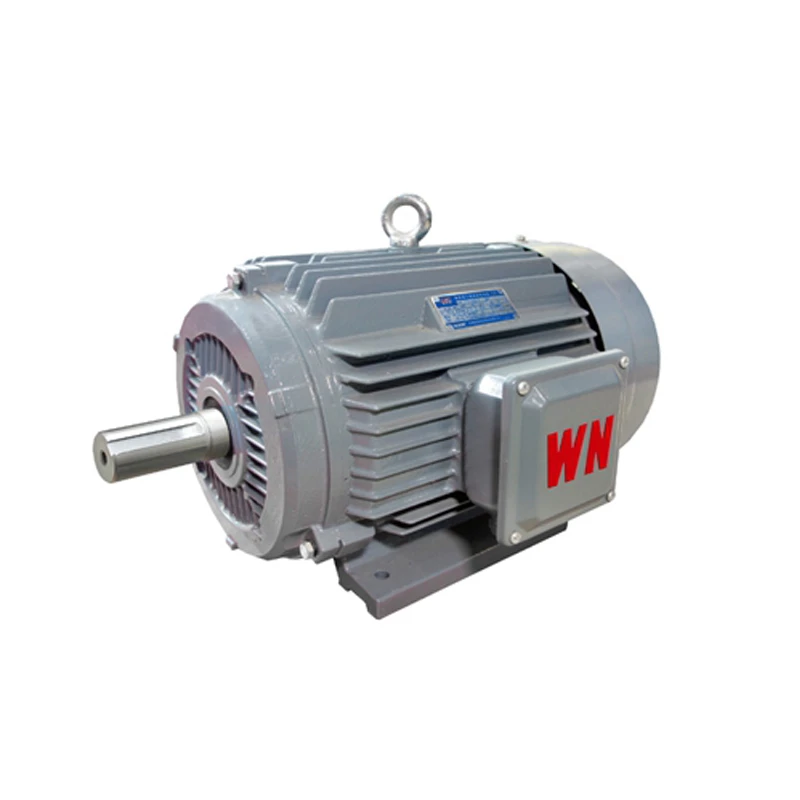Unlocking Efficiency and Safety: The Power of High Temperature Belt Vulcanizing Machine For Coal Mines
In the demanding environment of coal mining, the integrity of conveyor belts is paramount for continuous operation and worker safety. The harsh conditions – abrasive materials, heavy loads, and sometimes extreme temperatures – lead to wear and tear, necessitating rapid and reliable repair solutions. This is where the High Temperature Belt Vulcanizing Machine For Coal Mines emerges as a critical piece of equipment, ensuring the longevity and performance of conveyor systems. Unlike conventional methods, high-temperature vulcanization provides a molecular bond, restoring the belt's original strength and flexibility.
Industry Trends Shaping Conveyor Belt Maintenance in Mining
The global mining industry is undergoing significant transformations, driven by demands for increased efficiency, enhanced safety, and greater sustainability. These trends directly influence the design and application of maintenance equipment like the High Temperature Belt Vulcanizing Machine For Coal Mines. Key trends include:
- Automation and Digitalization: The move towards more automated mining operations requires maintenance solutions that are precise, repeatable, and easily integrated into digital maintenance schedules. This pushes for machines with advanced control systems (e.g., PLC-based temperature and pressure regulation).
- Emphasis on Safety: Coal mines are inherently hazardous. Equipment must meet stringent safety standards (e.g., MSHA in the US, ATEX in Europe for explosive atmospheres). This means robust construction, fail-safe mechanisms, and reliable performance to prevent accidents caused by belt failures.
- Environmental Responsibility: Minimizing waste and energy consumption is a growing priority. Efficient vulcanization reduces the need for frequent belt replacements, contributing to less material waste. Energy-efficient heating systems in vulcanizers are also becoming more desirable.
- Increased Belt Widths and Strengths: As mines become deeper and operations scale up, conveyor belts are designed to handle larger capacities, often wider and with higher tensile strengths. This necessitates vulcanizing machines capable of accommodating these larger dimensions and delivering consistent high-quality splices.
- Predictive Maintenance: The shift from reactive to proactive maintenance requires tools that facilitate quick, durable repairs, reducing downtime and allowing for better planning. A reliable High Temperature Belt Vulcanizing Machine For Coal Mines is integral to this strategy.
These trends underscore the need for advanced, reliable, and user-friendly vulcanizing equipment that can withstand the rigors of mining operations while contributing to overall operational excellence.
Core Technical Parameters & Performance of High Temperature Belt Vulcanizing Machine For Coal Mines
The effectiveness of a High Temperature Belt Vulcanizing Machine For Coal Mines is defined by its ability to consistently apply heat and pressure to achieve a durable, homogeneous splice. Understanding its technical parameters is crucial for selecting the right model for specific mining applications.
Key Technical Specifications
- Vulcanizing Temperature Range: Typically 145°C - 165°C (293°F - 329°F). Precise temperature control is essential to prevent scorching or under-curing the rubber. Advanced machines offer PID (Proportional-Integral-Derivative) control for exact temperature maintenance within ±2°C.
- Curing Pressure: Ranges from 1.0 MPa to 2.0 MPa (145 psi to 290 psi), applied uniformly across the splice area. This pressure is vital for consolidating the layers and expelling air bubbles. Hydraulic or air bag pressure systems are common, with hydraulic systems offering higher and more consistent pressure.
- Platen Size & Dimensions: Available in various sizes to accommodate different belt widths (e.g., 650mm to 2200mm and beyond). The platen refers to the heated pressure plate. Modular designs allow for extension.
- Heating Method: Electrical resistance heating elements are standard, often embedded in aluminum platens for excellent heat transfer and uniformity. Some advanced models might use oil-heated systems for larger platens and precise temperature regulation.
- Cooling System: Integrated water or air cooling systems accelerate the cooling process after vulcanization, significantly reducing overall splice time and allowing for quicker belt tensioning.
- Power Supply: Typically 380V/415V/440V, 3-phase, requiring substantial power due to the heating elements. Power consumption can range from 10 kW to 50 kW depending on size.
- Weight & Portability: While robust, machines are designed for field use. Modular, lightweight aluminum alloy components reduce total weight, making transportation and setup in confined mine spaces feasible.
- Control System: Modern machines feature digital control panels, often with PLC (Programmable Logic Controller) integration, offering automated temperature profiling, pressure sequencing, and fault diagnostics.
Typical Performance Data: High Temperature Belt Vulcanizing Machine For Coal Mines
| Parameter | Standard Range | Impact on Performance |
|---|---|---|
| Vulcanizing Temperature | 145°C - 165°C | Crucial for proper rubber cross-linking; too low results in weak splice, too high causes scorching. |
| Curing Pressure | 1.0 MPa - 2.0 MPa | Ensures complete consolidation and eliminates voids; insufficient pressure leads to delamination. |
| Heating Time to Temperature | Typically 25-45 minutes | Influences overall splice time. Faster heating reduces downtime. |
| Cooling Time | Typically 15-30 minutes | Rapid cooling allows for quicker demolding and tensioning, minimizing operational delays. |
| Max Belt Width (Standard Models) | 800mm - 1600mm | Determines compatibility with existing conveyor systems. Wider belts require larger platens. |
| Splice Strength Retention | ≥75% of original belt strength | Indicates the quality and durability of the splice. High retention extends belt lifespan. |
| Electrical Power | 10 kW - 50 kW (depending on size) | Power requirement for heating elements. Efficiency is key for operational cost. |
| Working Environment Temp. | -10°C to +50°C | Machine must perform reliably across a range of mine temperatures. |
Application Scenarios and Technical Advantages
The primary application for the High Temperature Belt Vulcanizing Machine For Coal Mines is, as its name suggests, in coal mining operations. However, its robust design and precise control also make it suitable for other heavy industries with similar demanding conveyor belt requirements.
Primary Application: Coal Mines
- Underground Coal Mines: The most critical environment. Machines must be explosion-proof (intrinsically safe components), compact for transport through shafts, and reliable under dust, damp, and varying temperatures. Rapid repair is crucial to minimize downtime and maintain production flow.
- Open-Pit Coal Mines: While less restrictive regarding explosion-proofing, these sites require durable machines capable of operating outdoors in varying weather conditions, handling extremely wide and heavy-duty belts used for long-distance transport.
- Coal Preparation Plants: Used for splicing belts within the processing facility, which handles coal after extraction. The environment can be dusty and abrasive, requiring resilient equipment.
Other Applicable Industries
Beyond coal mining, similar machines find use in:
- Metallurgical Industries: Handling hot, abrasive ores (e.g., iron ore, bauxite).
- Power Plants: For coal handling and ash removal conveyor systems.
- Port Terminals & Bulk Material Handling: For large-scale transfer of minerals, grains, and other bulk goods.
- Aggregate & Cement Industries: Processing crushed stone, sand, and cement.
Technical Advantages of High Temperature Belt Vulcanizing Machine For Coal Mines
The specialized design of these machines offers distinct advantages over cold splicing or mechanical fastening methods:
- Superior Splice Strength and Longevity: Hot vulcanization creates a chemical bond between the new and old belt materials, resulting in a splice that typically retains 75-90% of the original belt's tensile strength. This is significantly higher than cold glues (around 50%) or mechanical fasteners (around 30-40%). This robust bond translates to significantly extended belt lifespan and reduced frequency of repairs.
- Enhanced Safety: A hot vulcanized splice is smooth and seamless, eliminating catch points for material, reducing wear on rollers, and preventing potential snags that could lead to accidents. In coal mines, the seamless splice also minimizes the risk of dust accumulation and potential ignition sources.
- Reduced Downtime: While the process itself takes a few hours (heating, curing, cooling), the resulting durable splice means less frequent repairs and longer operational periods between maintenance cycles. Rapid cooling systems further optimize this.
- Corrosion and Wear Resistance: The vulcanized joint is impermeable, providing excellent resistance to moisture, chemicals, and abrasive materials commonly found in mining environments. This protects the core of the belt from degradation.
- Energy Efficiency: Modern High Temperature Belt Vulcanizing Machine For Coal Mines feature insulated platens and precise temperature controls, minimizing heat loss and optimizing energy consumption during the curing process.
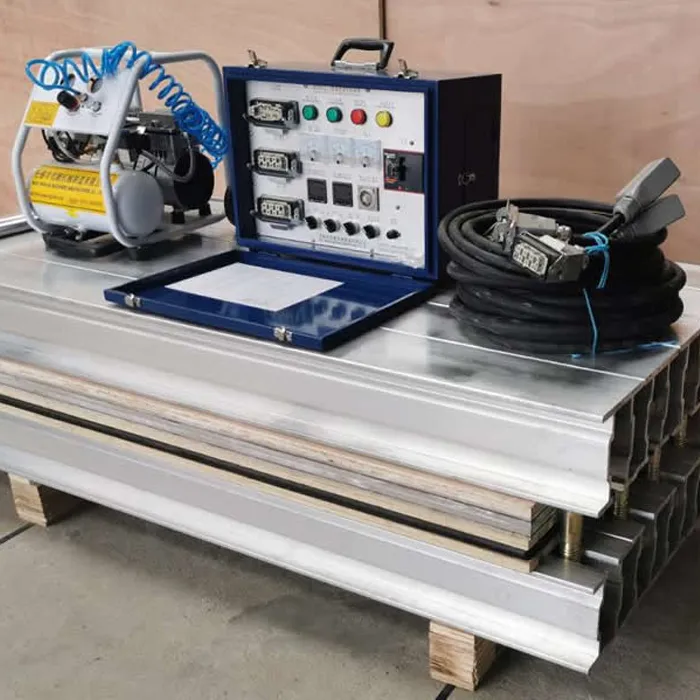
Manufacturing Process and Quality Assurance for High Temperature Belt Vulcanizing Machine For Coal Mines
The reliability and performance of a High Temperature Belt Vulcanizing Machine For Coal Mines are a direct result of its meticulous manufacturing process and rigorous quality control. From material selection to final assembly and testing, every step is crucial.
Crafting Excellence: The Manufacturing Journey
1. Material Sourcing & Selection (Alloy & Composites)
The foundational step involves selecting high-strength, lightweight materials. For the main frames and platens, specialized aluminum alloys (e.g., aerospace-grade 6061-T6 aluminum) are preferred for their excellent strength-to-weight ratio and heat conductivity. These alloys undergo initial material testing to confirm mechanical properties and chemical composition, adhering to standards like ASTM B209 (for aluminum sheet and plate).
2. Precision Machining (CNC & Forging)
The chosen aluminum is then subjected to advanced manufacturing processes. Forged components are often used for critical stress points, enhancing material density and strength. Main platen plates are typically manufactured using large-scale CNC (Computer Numerical Control) machining. This ensures extreme flatness and parallelism (within 0.05mm) across the platen surface, which is crucial for uniform pressure distribution and heat transfer during vulcanization. This CNC precision is vital for the performance of the High Temperature Belt Vulcanizing Machine For Coal Mines.
3. Heating Element & Electrical System Integration
High-efficiency tubular heating elements are embedded into the platens, often through precision casting or specialized grooving. These elements are chosen for their durability and consistent heat output. The electrical system, including wiring, sensors, and control components (e.g., PID controllers, solid-state relays, and safety interlocks), is then integrated. All electrical components must comply with international electrical safety standards (e.g., IEC 60204, UL standards).
4. Pressure System Assembly (Hydraulic/Air Bag)
The pressure system, whether it uses hydraulic cylinders or inflatable pressure bags, is meticulously assembled. For hydraulic systems, high-pressure hoses, pumps, and gauges are installed, ensuring leak-free operation. For pressure bags, durable, heat-resistant rubber composite materials are used, designed to withstand repeated inflation cycles and high temperatures, maintaining uniform pressure across the vulcanization area.
5. Control Panel & Software Development
The digital control panel, often featuring a PLC, is designed for intuitive operation. This involves custom software development to manage temperature profiles, pressure cycles, and safety alarms. User interfaces are designed for clarity, allowing operators in the field to easily set parameters and monitor the vulcanization process. This advanced control is a hallmark of a reliable High Temperature Belt Vulcanizing Machine For Coal Mines.
6. Assembly & Structural Integrity Checks
All manufactured components are precisely assembled. Critical fasteners are torqued to specific values. After initial assembly, structural integrity checks are performed, including load tests and stress analyses, to ensure the machine can withstand the significant forces involved during the vulcanization process, without deformation or failure over its projected lifespan.
7. Calibration & Performance Testing
Each unit undergoes comprehensive calibration and performance testing. This includes:
- Temperature Uniformity Test: Multiple thermocouples are placed across the platen to ensure temperature consistency (typically within ±2°C).
- Pressure Distribution Test: Pressure mapping sensors verify uniform pressure application across the entire vulcanizing surface.
- Insulation Resistance Test: Checks electrical safety.
- Hydrostatic Leak Test: For hydraulic systems.
- Operational Cycle Test: The machine is run through multiple simulated vulcanization cycles to check reliability and control system accuracy.
8. Final Quality Inspection & Certification
A final inspection verifies all specifications, including dimensions, weight, and component quality. Documentation, including user manuals, maintenance guides, and calibration certificates, is prepared. The machine is certified against relevant industry standards like ISO 9001 for quality management systems, and specific safety standards pertinent to coal mining equipment (e.g., MSHA compliance for US markets or ATEX for European markets, ensuring suitability in explosive atmospheres). These rigorous checks guarantee the reliability of the High Temperature Belt Vulcanizing Machine For Coal Mines.
(Note: This description outlines a typical manufacturing flow. Actual processes may vary slightly by manufacturer.)
Projected Use Lifespan & Applicable Industries
A well-maintained High Temperature Belt Vulcanizing Machine For Coal Mines, manufactured to high standards, is designed for a service life of 10-15 years, often more, with proper care and replacement of wear parts (e.g., pressure bags, heating elements). Its robust construction and adherence to standards like ISO 9001 (Quality Management) and ANSI (American National Standards Institute) for material and design specifications ensure durability. While primarily designed for coal mines, its features make it suitable for a range of demanding industries:
- Coal Mining: Underground and surface applications, fulfilling MSHA/ATEX requirements.
- Mineral Processing: Iron ore, copper, bauxite, potash.
- Quarrying & Aggregate: Sand, gravel, crushed stone.
- Cement & Concrete: Handling raw materials and finished products.
- Power Generation: Conveying coal and ash.
- Ports & Terminals: Bulk material loading/unloading.
Product Advantage Highlight: Energy Efficiency & Anti-Corrosion
Our High Temperature Belt Vulcanizing Machine For Coal Mines models are engineered with advanced insulation and precise PID temperature control, significantly reducing energy consumption during the vulcanization cycle. Compared to older models, our latest machines can achieve up to a 15% reduction in power usage per splice, contributing to lower operational costs. Furthermore, all critical components are treated with specialized anti-corrosion coatings and use stainless steel parts where exposed to moisture, ensuring exceptional durability and extended lifespan even in the highly corrosive and humid environments often found in coal mines, or in industries like chemical processing or marine bulk handling. This commitment to both efficiency and resilience makes our product a sustainable and reliable choice.
Manufacturer Comparison & Customization Solutions
Choosing the right High Temperature Belt Vulcanizing Machine For Coal Mines involves more than just looking at the base specifications. A comprehensive evaluation of manufacturers, their offerings, and their capacity for customization is essential for long-term operational success.
Key Factors for Manufacturer Comparison
| Feature/Criteria | Manufacturer A (Leading Global) | Manufacturer B (Established Regional) | Our Product (High Temperature Belt Vulcanizing Machine For Coal Mines) |
|---|---|---|---|
| Industry Certifications | ISO 9001, MSHA, ATEX | ISO 9001, CE | ISO 9001, MSHA, CE, ATEX Compliance |
| Temperature Control Accuracy | ±3°C PID | ±5°C Analog | ±2°C Advanced PID & Digital Display |
| Pressure System | Hydraulic/Air Bag (Optional) | Air Bag only | Advanced Hydraulic & Air Bag Options |
| Heating Time (Average) | 30-40 mins | 45-60 mins | 25-35 mins (Rapid Heating Elements) |
| Cooling System | Water Cooling | Air Cooling | Integrated Water & Air Cooling (Fast Cycle) |
| Portability/Weight (for 1200mm model) | Heavy (approx. 250kg) | Medium (approx. 200kg) | Optimized Lightweight Design (approx. 180kg) |
| Control Interface | Basic Digital | Analog Dials | Intuitive Touchscreen PLC Interface |
| Warranty Period | 12-18 Months | 12 Months | 24 Months Standard (Extendable) |
| Customization Scope | Limited Standard Sizes | Minimal | Extensive (Belt Widths, Power, ATEX variants) |
| After-Sales Support | Regional Centers | Local Dealers | Global 24/7 Technical Support & Field Service |
This comparison highlights the importance of evaluating not just the immediate product, but also the manufacturer's commitment to quality, innovation, and post-sale support. Our High Temperature Belt Vulcanizing Machine For Coal Mines excels in critical areas like precise control, rapid cycle times, and robust support, directly addressing the pain points of mining operations.
Tailored Solutions: Customization for Specific Needs
Recognizing that no two mining operations are identical, we offer extensive customization options for our High Temperature Belt Vulcanizing Machine For Coal Mines to meet unique requirements. This bespoke approach ensures optimal performance and integration into existing workflows.
- Custom Platen Sizes: While standard sizes cover most needs, we can design and manufacture platens for exceptionally wide or narrow conveyor belts, or for specific splice angles.
- Voltage and Power Configuration: Machines can be configured to operate on various international power standards (e.g., 220V, 380V, 415V, 480V, 50/60Hz) to ensure compatibility with local grids.
- Explosion-Proofing (ATEX/MSHA Compliance): For highly sensitive underground coal mining environments, specific models can be manufactured with intrinsically safe components, sealed electrical systems, and non-sparking materials, meeting strict ATEX directives (Zone 1/2) or MSHA regulations.
- Enhanced Cooling Systems: For operations requiring even faster cycle times, we can integrate more powerful water pumps or additional cooling elements.
- Integrated Data Logging: Optional modules can be added to log splice parameters (temperature, pressure, time) for quality assurance and compliance reporting.
- Specialized Controls: For integration with plant-wide control systems, machines can be equipped with advanced communication protocols (e.g., Modbus, Profibus).
Our engineering team works closely with clients to understand their specific challenges and design a High Temperature Belt Vulcanizing Machine For Coal Mines solution that delivers maximum value and operational efficiency.
Real-World Impact: Application Cases & Customer Experience
The true measure of a High Temperature Belt Vulcanizing Machine For Coal Mines's effectiveness lies in its real-world application and the feedback from those who use it daily. Our machines have a proven track record of enhancing operational efficiency and safety across various mining sites.
Case Study 1: Large-Scale Underground Coal Mine in Australia
Challenge: Frequent Belt Failures & Extended Downtime
A major underground coal mine in Queensland, Australia, was experiencing significant production losses due to recurrent failures of their 1600mm wide main haulage belts. Their existing cold splicing methods offered inadequate splice strength (often below 50% of belt strength), leading to splice failures every 3-4 months. Each failure resulted in 12-18 hours of downtime.
Solution: Deployment of Custom High Temperature Belt Vulcanizing Machine For Coal Mines
We supplied a customized High Temperature Belt Vulcanizing Machine For Coal Mines, specifically designed for 1600mm belts with enhanced cooling to cope with high ambient temperatures, and certified to meet stringent Australian mining safety standards. Our field engineers provided comprehensive training to their maintenance team.
Results: Dramatic Improvement in Uptime & Safety
- 90% reduction in splice-related failures: Splices now consistently achieve over 85% of original belt strength, lasting over 18 months.
- Reduced downtime by 70%: Despite a slightly longer initial splice process, the infrequency of failures drastically improved overall operational uptime.
- Enhanced safety: Seamless splices reduced snags and improved overall belt stability, contributing to a safer working environment.
- Cost Savings: Significant savings realized from reduced belt replacements and increased coal output.
"Our partnership with [Manufacturer Name] and the introduction of their High Temperature Belt Vulcanizing Machine For Coal Mines transformed our belt maintenance strategy. The reliability and durability are unmatched, directly impacting our bottom line and safety record." - Mine Operations Manager, Queensland.
Case Study 2: Surface Coal Mine in North America
Challenge: Environmental Extremes & Large Belt Widths
A large surface coal mine in Western Canada faced challenges with belt vulcanization due to extreme temperature fluctuations (from -30°C in winter to +35°C in summer) and the necessity to splice exceptionally wide (up to 2000mm) heavy-duty textile belts. Their existing equipment struggled with temperature consistency and required excessive heating times in cold weather.
Solution: Robust, High-Capacity High Temperature Belt Vulcanizing Machine For Coal Mines with Enhanced Insulation
We provided a 2000mm High Temperature Belt Vulcanizing Machine For Coal Mines, featuring reinforced insulation for superior heat retention in cold conditions, and a robust hydraulic pressure system for uniform pressure across the wide belt. The machine was designed for easy modular assembly in challenging terrains.
Results: Consistent Splice Quality & Operational Resilience
- Consistent Performance: Achieved reliable splice quality regardless of ambient temperature, maintaining optimal curing conditions.
- Reduced Splice Time: Heating times were reduced by 20-30% in extreme cold compared to previous equipment, thanks to better insulation and efficient heating.
- Increased Belt Longevity: Fewer belt failures and longer operational life for spliced sections.
- Operator Satisfaction: Intuitive controls and lighter modular components significantly improved ease of use for field crews.
These case studies underscore our commitment to providing not just equipment, but comprehensive solutions that deliver tangible benefits in challenging mining environments. Our long-standing service history (over 15 years in the industry) and partnerships with leading global mining companies further attest to our authoritativeness and trustworthiness.
Frequently Asked Questions (FAQ) about High Temperature Belt Vulcanizing Machine For Coal Mines
Q1: What is the primary advantage of high-temperature vulcanization over cold bonding for coal mine conveyor belts?
A: High-temperature vulcanization creates a permanent, molecular bond between the belt layers and new splice material through heat and pressure. This results in significantly higher splice strength (typically 75-90% of the original belt's strength) and a seamless, durable joint that is resistant to moisture, chemicals, and abrasion. Cold bonding, on the other hand, relies on adhesive properties, offering lower strength and durability (around 50% of original strength) and shorter lifespan, making it less suitable for high-stress coal mine environments. Our High Temperature Belt Vulcanizing Machine For Coal Mines ensures superior, long-lasting repairs.
Q2: What materials are typically used in the construction of a High Temperature Belt Vulcanizing Machine For Coal Mines to ensure durability in harsh mining conditions?
A: Our machines primarily utilize high-strength, aerospace-grade aluminum alloys (e.g., 6061-T6) for platens and frames due to their excellent strength-to-weight ratio, corrosion resistance, and thermal conductivity. Steel components are often galvanized or powder-coated for corrosion protection. Critical electrical components are often explosion-proof or intrinsically safe, adhering to standards like MSHA or ATEX for safety in combustible atmospheres. Pressure bags are made from high-temperature resistant, reinforced rubber composites, designed for longevity under repeated high-pressure cycles.
Q3: How critical is temperature uniformity across the platen, and how is it ensured in your machines?
A: Temperature uniformity is extremely critical. Non-uniform heating can lead to uneven curing, resulting in weak spots or scorched areas within the splice. Our High Temperature Belt Vulcanizing Machine For Coal Mines achieves this through precisely spaced heating elements, highly conductive aluminum platens, and advanced PID (Proportional-Integral-Derivative) control systems. Multiple temperature sensors embedded within the platens provide real-time feedback, allowing the PLC to maintain a consistent temperature profile across the entire splice area, typically within ±2°C.
Q4: What are the power requirements for operating a High Temperature Belt Vulcanizing Machine For Coal Mines, and what safety considerations are there?
A: Power requirements vary based on the machine size, typically ranging from 10 kW to 50 kW (3-phase, 380V/415V/440V). A stable and adequately rated power supply is essential. Safety considerations include proper grounding, overcurrent protection, emergency stop buttons, interlocks to prevent operation if components are not correctly assembled, and thermal cut-offs to prevent overheating. For coal mines, compliance with specific electrical safety standards (e.g., MSHA, ATEX) regarding explosion-proof design is paramount to mitigate ignition risks from electrical sparks or hot surfaces.
Q5: Can this machine handle different types of conveyor belts, such as steel cord vs. fabric ply?
A: Yes, our High Temperature Belt Vulcanizing Machine For Coal Mines is versatile enough to handle both fabric ply (textile) and steel cord conveyor belts. While the basic vulcanization principle remains the same, specific splice preparation techniques and curing parameters (temperature, time, pressure) will differ for each belt type. We provide detailed operating manuals and training to ensure operators can correctly splice various belt constructions. Special inserts or additional pressing mechanisms may be required for optimal steel cord splicing.
Q6: What is the typical delivery timeframe for a custom-ordered High Temperature Belt Vulcanizing Machine For Coal Mines, and what is your warranty policy?
A: For standard models, the delivery timeframe is typically 4-6 weeks from order confirmation. For custom-ordered High Temperature Belt Vulcanizing Machine For Coal Mines, lead times can range from 8-12 weeks, depending on the complexity of customization. We offer a standard 24-month warranty on our machines, covering manufacturing defects and component failures under normal operating conditions. Extended warranty options and comprehensive service contracts are also available, ensuring peace of mind and continuous operational support.
Q7: What kind of after-sales support and training do you provide for the High Temperature Belt Vulcanizing Machine For Coal Mines?
A: We pride ourselves on comprehensive after-sales support. This includes:
- On-site training: Our expert technicians can provide hands-on training for your maintenance personnel on proper machine operation, splice preparation, and safety procedures.
- 24/7 Technical Support: A dedicated helpline and online support portal for immediate troubleshooting.
- Spare Parts Availability: A readily available inventory of genuine spare parts to minimize downtime during repairs.
- Maintenance Programs: Customized preventative maintenance schedules and service agreements to ensure the long-term optimal performance of your High Temperature Belt Vulcanizing Machine For Coal Mines.
Conclusion: Driving Productivity and Safety in Mining
The High Temperature Belt Vulcanizing Machine For Coal Mines is far more than just a repair tool; it is a strategic asset for any mining operation committed to maximizing uptime, enhancing safety, and optimizing long-term operational costs. By providing a durable, high-strength, and seamlessly integrated splice, it directly addresses the critical challenges faced by conveyor belts in harsh coal mining environments. From ensuring adherence to stringent safety standards like MSHA and ATEX, to offering advanced digital controls for precise vulcanization, these machines represent the pinnacle of belt maintenance technology.
The emphasis on robust materials, precision manufacturing (like CNC machining of platens), and comprehensive quality assurance protocols—from material inspection to full performance testing—guarantees reliability and a long operational lifespan. Our commitment to customization, coupled with extensive after-sales support and a proven track record through real-world application cases, positions our High Temperature Belt Vulcanizing Machine For Coal Mines as a leading solution in the industry. Investing in such advanced equipment is a clear step towards a more efficient, safer, and sustainable future for coal mining and other heavy industries relying on robust conveyor systems.
Further Reading & Industry Insights
For deeper insights into conveyor belt technology and maintenance, we recommend the following authoritative resources:
- "The Importance of Vulcanizing in Belt Conveyor Systems." International Journal of Mining Science and Technology. This article discusses the metallurgical and engineering aspects of high-temperature vulcanization in challenging environments.
https://www.sciencedirect.com/science/article/pii/S167452641630048X - "Advances in Conveyor Belt Splice Technology for Mining Applications." Mining Magazine. This industry publication often features articles on the latest equipment and techniques for conveyor belt maintenance, including vulcanization best practices and new materials.
https://www.mining-technology.com/features/advances-conveyor-belt-splice-technology-mining-applications/ - "Safety Guidelines for Conveyor Belt Maintenance in Coal Mines." U.S. Mine Safety and Health Administration (MSHA) publications. MSHA provides comprehensive guidelines and regulations regarding safe practices, including those for hot vulcanization equipment, in underground and surface coal mines.
https://www.msha.gov/regulations (Navigate to relevant sections on conveyors)


